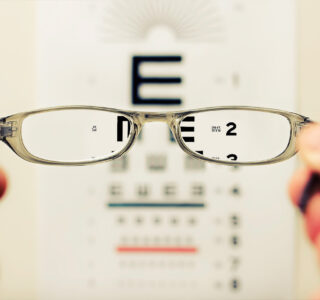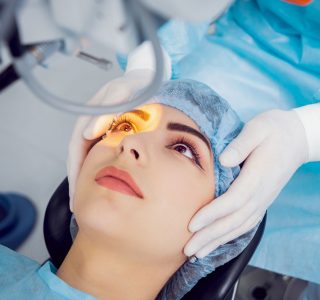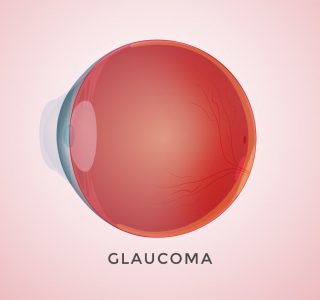New Options for Treating Glaucoma - The Sneak Thief of Sight
Glaucoma has been dubbed the sneak thief of sight because of the insidious nature of the disease. It is the leading cause of blindness in African-Americans and Hispanics, and the second most common cause of blindness in the United States. There are over 2 million Americans with glaucoma, half of whom are unaware that they have the disease until they experience loss of part of their vision. Additionally, there are 5-10 million Americans with high eye pressure, which puts them at considerable risk for developing glaucoma.
In order to be diagnosed with glaucoma, there must be damage to the optic nerve which results in a decrease in the patient’s side vision. Glaucoma is broadly classified into two categories – open-angle or closed-angle. There are multiple causes but one of the most important is elevated eye pressure, which is caused by clogging in the trabecular meshwork, a tissue that serves as a drainage system for the eye.
Open-angle glaucoma is characterized by a slow, gradual blockage of the draining site. This type of glaucoma is a lifelong condition and is the most common type of glaucoma, accounting for 90% of glaucoma in the United States. The symptoms for open- angle glaucoma may not be noticeable until part of the peripheral vision has already been damaged. In closed-angle glaucoma, the iris or colored part of the eye is pushed or pulled forward by several different mechanisms to block the canal of Schlemm, thus preventing the aqueous humor from draining. Patients with angle-closure glaucoma may experience blurred vision, severe eye pain, headache, nausea, and vomiting. Closed-angle glaucoma is a medical emergency that requires immediate treatment.
Glaucoma can be detected through a routine eye exam. It is recommended that patients with risk factors have a glaucoma-screening exam by age 40. The risk factors for open-angle glaucoma include a family history of glaucoma, age greater than 65, African-American or Hispanic race, use of steroid medications, nearsightedness, and any history of high eye pressures. The risk factors for closed-angle glaucoma are Caucasian or Asian race, far-sightedness, age, woman gender, and a family history. The ophthalmologist checks the pressure, the drain, and the optic nerve for signs of the disease and may order a visual field exam and a new specialized test known as an optic nerve head analyzer. Your eye care provider can then assess your risk for developing glaucoma and recommend a timetable for follow up care to prevent any vision loss.
Although glaucoma can damage the optic nerve irreversibly, there are treatments that can stop the disease from progressing further. In open-angle glaucoma, all currently approved treatments are directed toward lowering eye pressure. This is accomplished by eye drops, laser treatment, or surgical treatment to create a new drain or external reservoir for the eye fluid. Most patients take eye drops one to two times a day to lower the eye pressure and reduce the risk of progression of glaucoma. Closed-angle glaucoma, on the other hand, is treated initially with laser treatment because it can cure the condition. If the closed-angle glaucoma is chronic however, your ophthalmologist may recommend additional eye drops or surgery to lower the eye pressure.
Laser procedures to treat glaucoma have been performed for well over 15 years. Recently, however, a new form of laser surgery known as Selective Laser Trabeculoplasty (SLT) has been introduced. This laser represents a significant advantage over traditional lasers because it is a cold laser that does not cauterize or damage the drain of the eye. It can provide lowering of the eye pressure for up to 5 years and can be repeated as necessary.
When medicines don’t work or when patients can’t tolerate or remember to take their medications, then surgery is an option. The traditional glaucoma surgery is trabeculectomy, in which a portion of the trabecular meshwork is removed, thereby helping to reduce the bottleneck causing elevated eye pressure. One of the newest and safer alternatives is a procedure known as iStent implantation. This involves placing an internal stent to open the drainage canal, similar to what cardiologists do to unblock clogged arteries. The procedure is sometimes called “angioplasty for the eye” because it involves inserting a thin catheter into Schlemm’s canal, a tube in the trabecular meshwork. The procedure takes less than 15 minutes to perform and can be done under local anesthetic, typically at the same time as cataract surgery in an outpatient setting. In more advanced cases, glaucoma drainage devices can be placed into the eye to drain the pressure. The ophthalmologist can tailor a treatment that will be most effective for the patient’s type of glaucoma and provide the best long-term solution to the disease.
The diagnosis and treatment of glaucoma has advanced considerably in the past decade. With new technology such as optic nerve fiber layer analysis, it is possible to detect glaucoma years before it affects the side vision. This knowledge empowers the ophthalmologist to intervene earlier in the course of glaucoma and preserve the quality of vision our patients deserve to lead full and meaningful lives.















